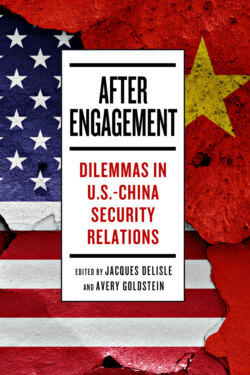Читать книгу After Engagement - Группа авторов - Страница 19
На сайте Литреса книга снята с продажи.
US POLICY AS A DRIVER OF CHINA’S POLICY
ОглавлениеTo put the preceding overview of China’s policy in context, it is necessary to consider the military and political framework in which China pursues its defense policies. The purpose of the following brief summary is not to ascertain whether China’s assessments of US policies was correct or even-handed but simply to characterize China’s situation and perspective.
A good place to start is the military and political status quo that China faced at the end of the Cold War, as its economy was starting its rapid upward trajectory. The United States emerged from the Cold War as the dominant, unipolar power, with military forces deployed across the globe, including major alliances in East Asia. China had a relatively small strategic nuclear force that was highly vulnerable to US attack. Its conventional forces were far from able to win a war against Taiwan, even if the United States failed to come to its aid. China’s appreciation of its military weakness was reinforced by the US demonstration of advanced conventional capabilities during the 1991 Gulf War. On the political front, China’s crushing of the Tiananmen demonstrations in 1989 significantly damaged its relationship with the United States, transforming what had briefly appeared to be a promising security environment.14 Given this negative political shift, China judged its military capabilities to be more inadequate.
Over the following decades, a number of US policies led China to conclude that further improvements in its military forces were required and that the United States was opposing its interests in Northeast Asia. The US decision to send two aircraft carrier battle groups near Taiwan in 1996 in response to China’s launching of missiles toward Taiwan surprised China and “led the Chinese to conclude that they needed a real military option—not just an empty threat—to solve the Taiwan problem.”15 The United States has pursued a steady stream of efforts to enhance the US-Japan alliance, including the following: the 1997 revision of the alliance guidelines that expanded Japan’s role in regional security; cooperation on theater missile defenses; a 2005 alliance statement that “encouraged the peaceful resolution of issues concerning the Taiwan Strait”; intensification of alliance interoperability and training; US official statements that the Senkaku/Diaoyu Islands were covered by the alliance treaty; and additional expansion of Japan’s alliance responsibilities during the Obama administration. This deepening of the alliance further supported China’s assessment that it faced greater threats and that continuing to improve its military capabilities was essential.16 Finally, China interpreted the Obama administration’s pivot/rebalance to Asia as an effort to encircle it while emboldening US regional allies by providing them with protection against China.17
